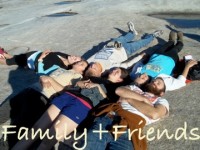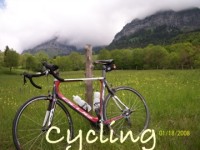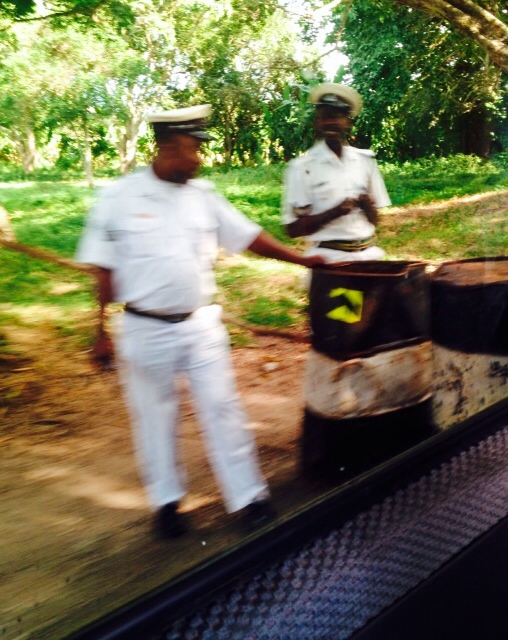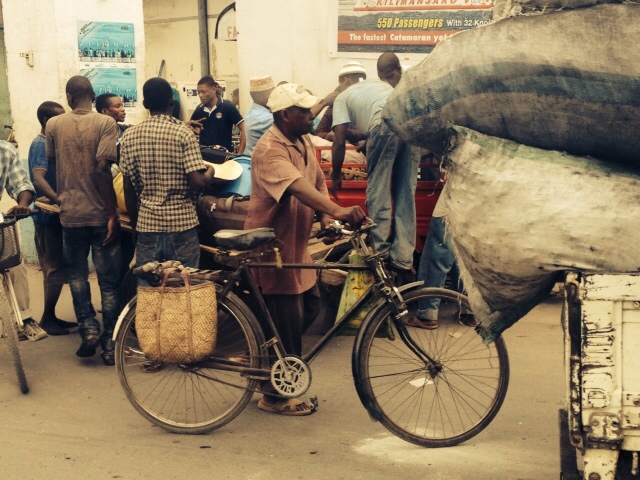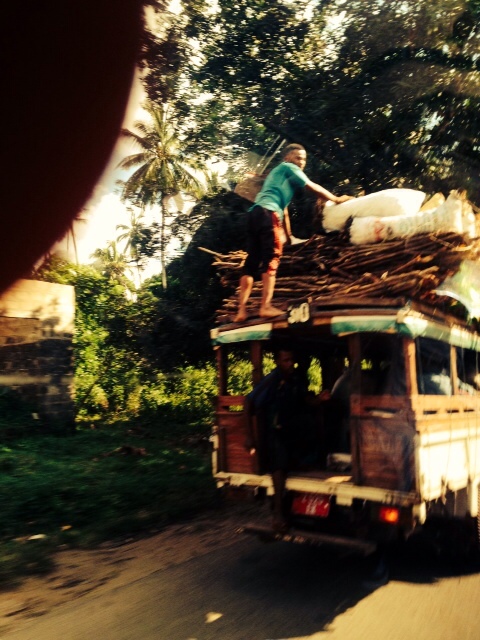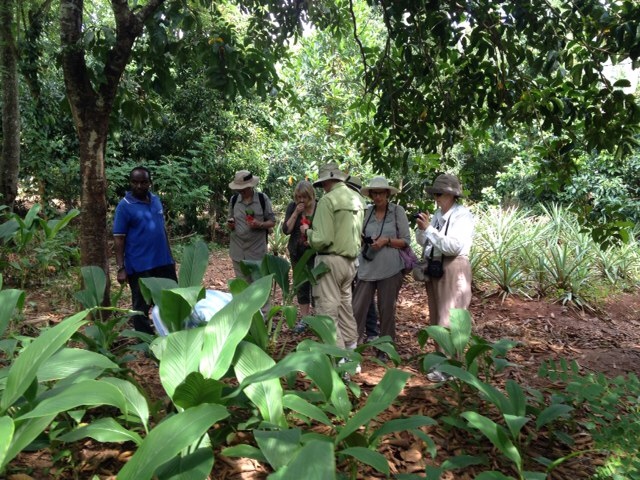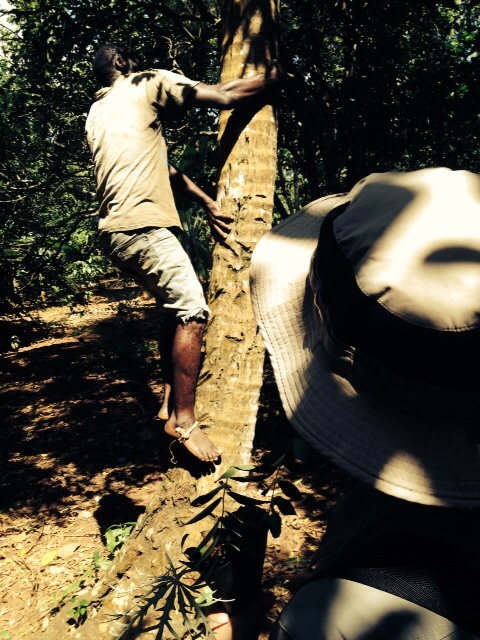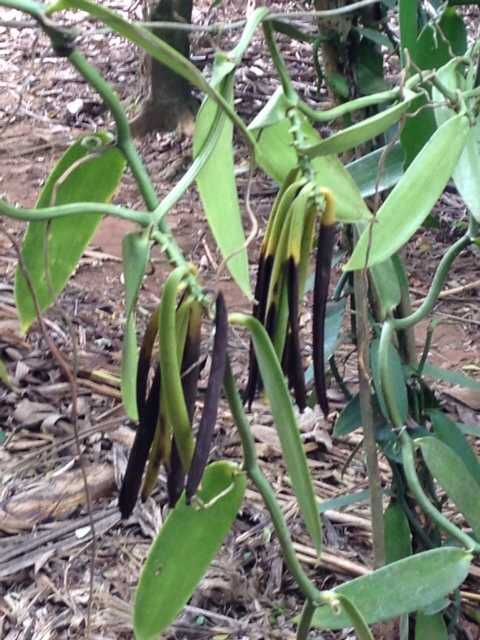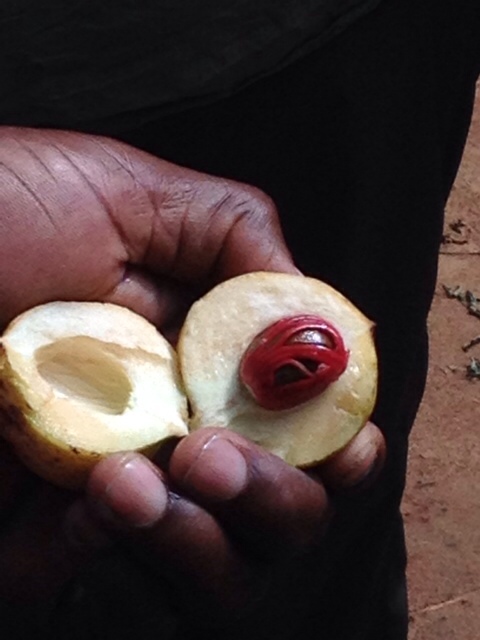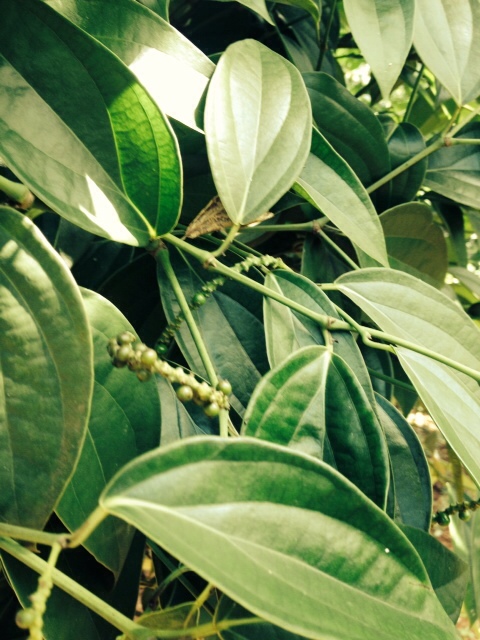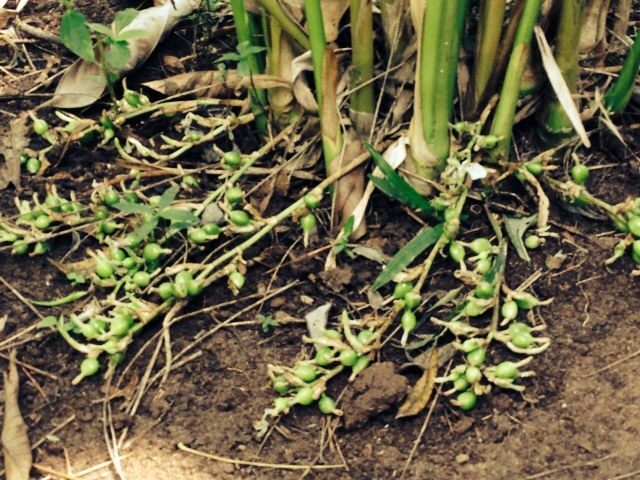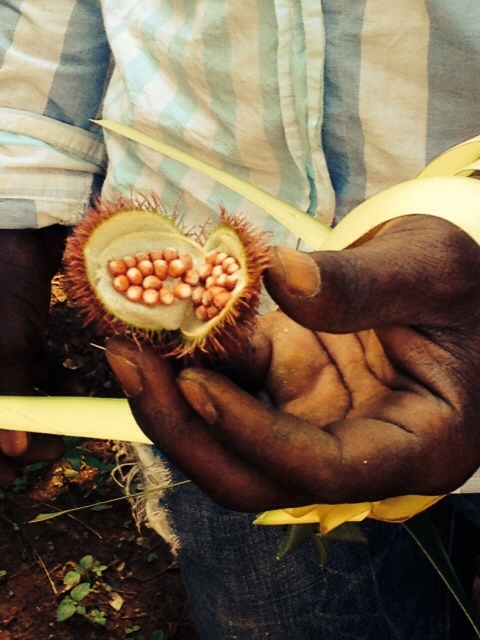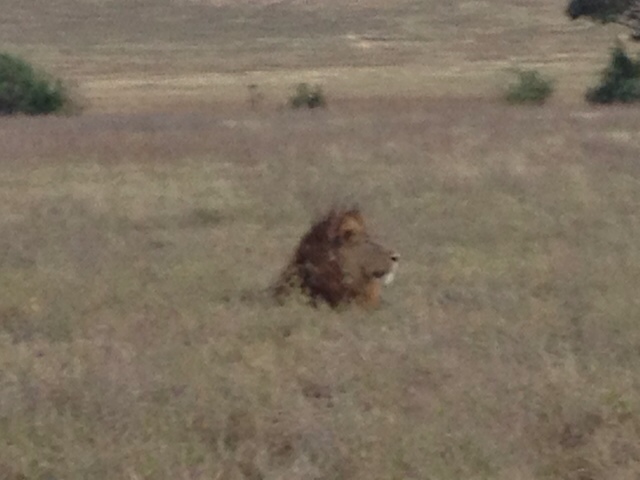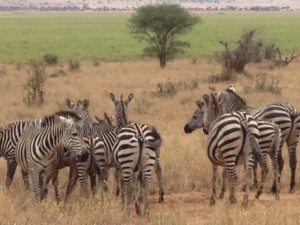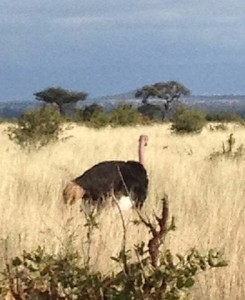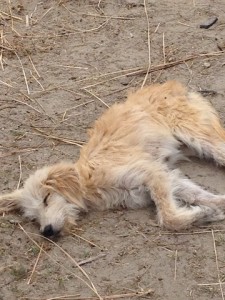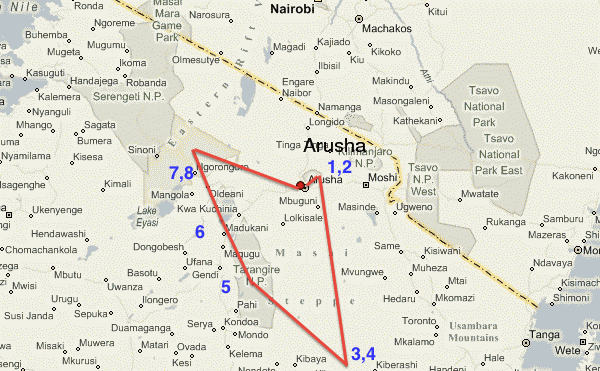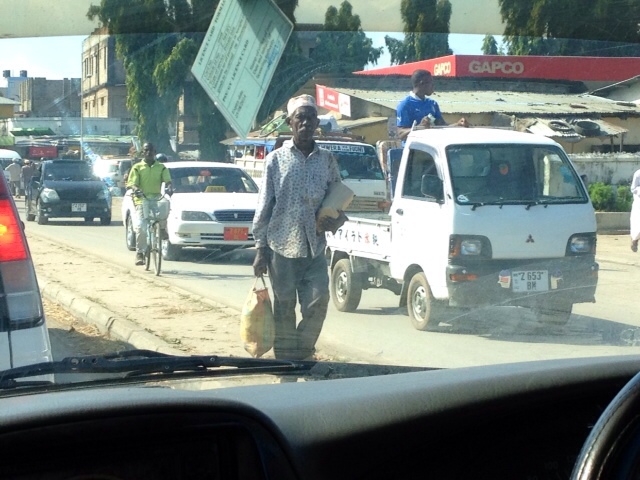
Share the road! Bikes, pedestrians, cars, trucks, brahma cows and motorcycles all compete for limited road space. The car rules, however. Here’s a rare median allowing a safety zone for a pedestrian.
Zanzibar has road rules, and they’re different than the US and Europe. Maybe they’re the same throughout Africa–we don’t have enough experience to know. Here’s what we’ve learned. Ignore these at your peril!
1. Roads have no centerlines or sidelines, although sidelines aren’t really feasible anyway given the narrow lanes, broken edges and dirt shoulders. This reinforces the parking lot concept–meaning, the full width of roadway is yours to work as long as there is no other traffic. Of course, there’s ALWAYS other traffic, lots of it, especially bicycles, pedestrians and daladalas, so additional rules are necessary.
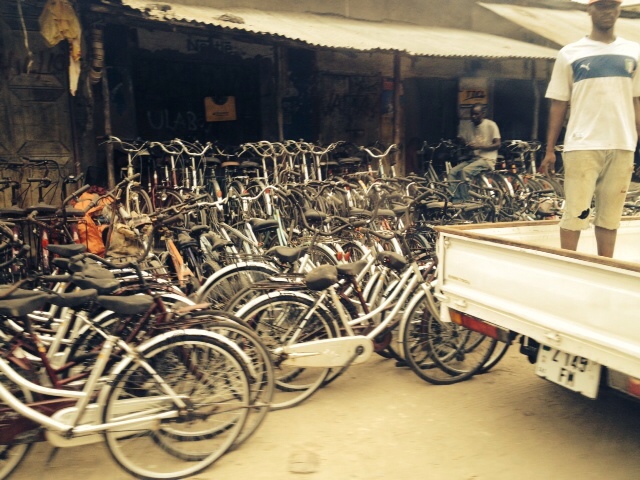
Bicycles are everywhere in Zanzibar, a primary means of transport. A car toot means Hit the shoulder!
2. Advancing traffic OWNS the left side of the road but may USE the right side of the road, limited only by opportunity and courage.
3. A toot of the horn is for traffic traveling in the same direction as you. It means, “I’m coming through.” In the case of bicycles, it means “Get over–preferably into the dirt!” In the case of motorized vehicles, it means, “I’m passing you so squeeze to the side.”
4. Activating the right turn signal is for oncoming traffic and it means, “I’m coming through and claiming my full lane so don’t try anything!” In particular, it notifies oncoming drivers not to try to pass bicycles or walkers at that moment. We’re not sure what you do if you actually want to make a right turn.
5. Flashing headlights at oncoming cars means, “Police checkpoint ahead.” Police checkpoints spring up at unpredictable places with unpredictable intentions and results. They seem mostly benign, and our private-hire vans generally were waved through once the police verified that tourists were inside. However, we were delayed for 10 minutes one time while our driver and a policeman argued, walked around the van, negotiated and consulted with others. Finally, our driver received a hand-written summons of some sort. When we asked what the ticket was for, our tour guide said, “For driving with money in his pocket!” A Zanzibaran joke?
6. There are no stop lights in Zanzibar, and only one stop sign that we know of. To our relief, our driver ignored the stop sign and rolled through.
7. If a car breaks down, all male bystanders must push the car to clear the road.
8. Road rage is not allowed. This is why Americans shouldn’t drive in Zanzibar and why you won’t be quizzed on these rules. Hakuna matata!

